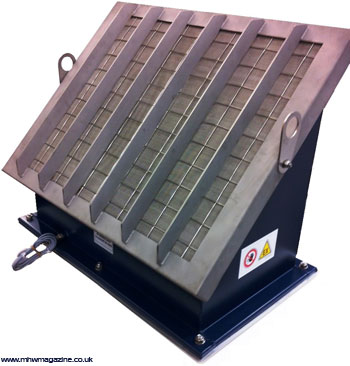
BS&B Safety Systems, a global expert in explosion protection technology, is launching a flameless venting system specific to bucket elevator operations, to protect against explosions.
A bucket elevator, also called a grain leg, is a mechanism for hauling flowing bulk materials (most often grain or fertiliser) vertically. If an explosion happens inside a process or storage enclosure, the rapid rise in pressure will exert destructive forces in milliseconds, putting personnel and equipment at risk.
The explosion venting IQR System™ comprises two parts, an explosion vent and a quenching module. The explosion vent responds rapidly to the building force of an expanding flameball and opens to relieve this pressure. As the developing fireball passes through the vent it is intercepted by the quenching module which retains the flames and hot gases, as well as the potentially toxic burning and unburnt dust.
While the flameball temperature of a dust explosion can easily reach 500°C/ 932°F, the quenching module typically remains below 100°C/212°F, followed by rapid cool down due to its large surface area. This results in a negligible change in temperature in the surrounding environment.
The system is an ideal solution for venting of explosions in bucket elevators that are located within, or partially within, a building or a zoned area where normal venting cannot occur. The vents are relatively lightweight, as they are smaller than standard flameless vents. BS&B Safety Systems offer organisations bucket elevator examinations and guidance regarding size and position of the venting with respect to international codes and standards, including NFPA 61 or VDI 2263 Part 8.1.
BS&B Safety Systems' proven range of protection and prevention technology includes explosion venting, explosion suppression, a choice of chemical and mechanical systems for the isolation of interconnected process equipment, plus spark detection and extinguishing equipment to manage a source of both dust explosion, ignition and fire.